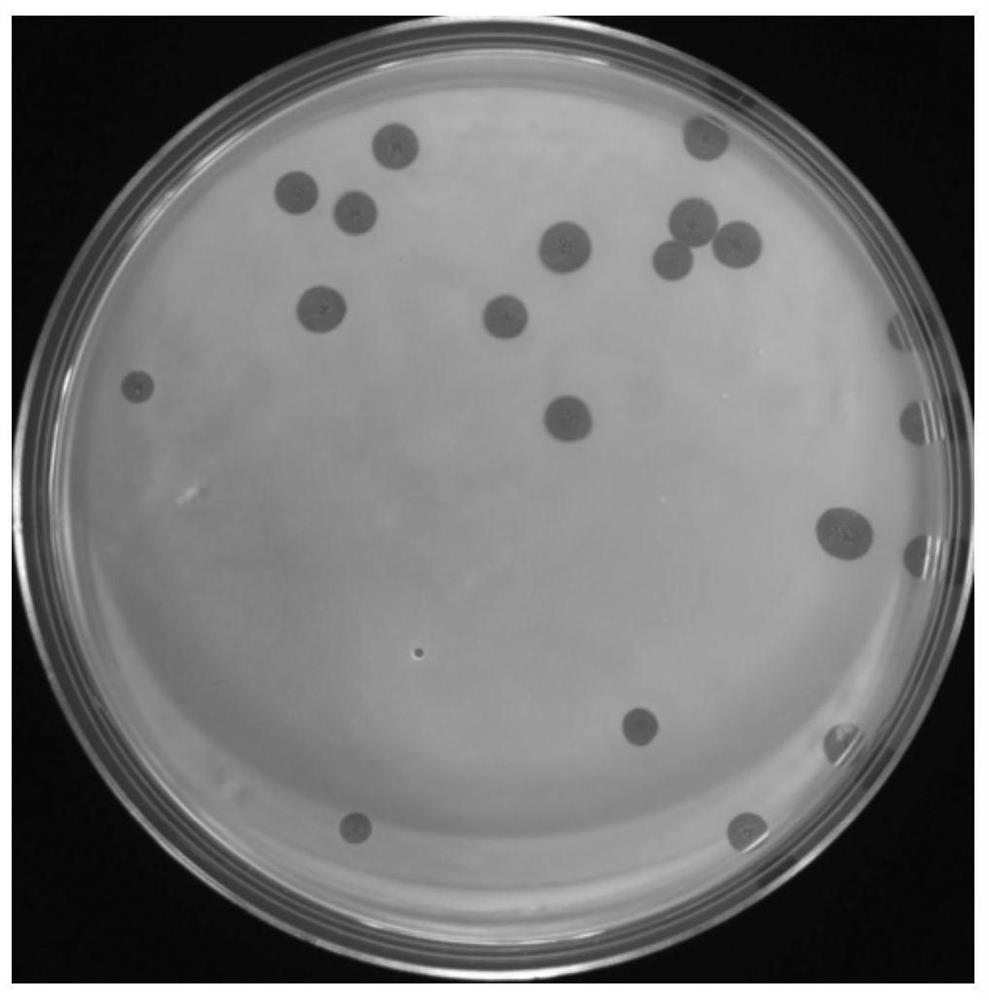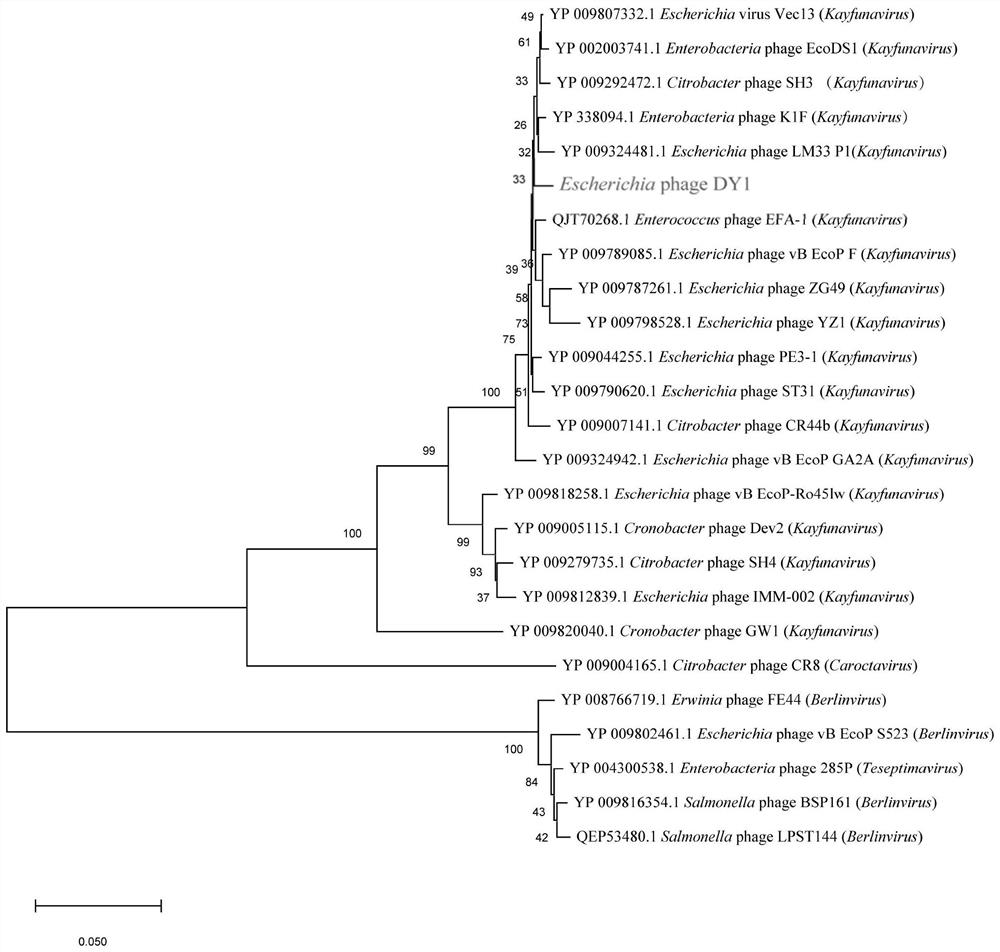A coliphage dy1 and its application
A technology of Escherichia coli and bacteriophage, which is applied in the field of bioengineering to achieve the effects of good acid-base and temperature tolerance, fast and efficient lysis, and good stability
- Summary
- Abstract
- Description
- Claims
- Application Information
AI Technical Summary
Problems solved by technology
Method used
Image
Examples
Embodiment 1
[0033] Embodiment 1, the separation and purification of phage
[0034] The water samples used to isolate phages in the present invention were collected in Pearl River, Guangzhou in 2018.
[0035] The collected water samples were centrifuged at 8,000g for 10 minutes and then filtered to remove impurities; solid MgSO was added 4 To a final concentration of 50mM. The phage particles were then retained by membrane filtration. Cut the filter membrane into small pieces and put it into 50 mL of eluent (1% beef extract, 3% Tween 80); then take 2.5 mL of eluate and 2.5 mL of TSB medium (1 mM CaCl 2 ) were mixed, and 100 μL of E. coli 180722 bacteria solution was added and shaken overnight at 37°C. After the overnight culture solution was centrifuged at 8,000g for 1 min, the supernatant was filtered, and the filtrate was the stock solution intended to contain phage. Use the double-layer plate method to identify whether there are phages in the filtrate. Take 100 μL of the host bact...
Embodiment 2
[0037] Embodiment 2, the morphological observation of bacteriophage
[0038] Drop the phage suspension on the copper grid, let it settle naturally for 15 minutes, absorb the excess liquid from the side with filter paper, add a drop of 2% phosphotungstic acid on the copper grid to stain the phage for 10 minutes, then absorb the staining solution with filter paper, and wait for the sample to dry Phage morphology was observed with an electron microscope. Transmission electron microscope results showed that ( figure 2 ) The phage has a polyhedron head and a short tail structure, and the diameter of the head is about 54nm. The present invention named it phage DY1. The inventor deposited the phage DY1 in the Culture Collection Center of the Guangdong Provincial Institute of Microbiology, and its preservation number is: GDMCC 61175-B1.
Embodiment 3
[0039] Example 3, phage genome analysis and identification
[0040] Whole-genome sequencing and analysis of phage DY1: the sample DNA was sequenced using the Ion torrent S5 platform, a 500bp library was constructed, and then the optimized sequence was spliced using the SPAdes v.3.6.2 splicing software. And use Prokka1.1.3 to annotate the assembly results, and use NCBI BLASTp to re-annotate the hypothetical protein. Then, the similarity between the phage and the reported phage was determined by NCBI BLASTn, and the genome was compared with the reported similar phage genome according to the annotated protein function, and the comparison results were visualized using Esayfig2.3.3.
[0041] The Genkbank accession number of the genome is: MT808983.1, and the whole genome analysis shows that the genome of phage DY1 is a linear double-stranded structure, the whole genome is 39,817bp long, and 54 open reading frames (Open Reading Frame, ORF) are predicted (Table 1) . ORF25 was p...
PUM
 Login to View More
Login to View More Abstract
Description
Claims
Application Information
 Login to View More
Login to View More - R&D
- Intellectual Property
- Life Sciences
- Materials
- Tech Scout
- Unparalleled Data Quality
- Higher Quality Content
- 60% Fewer Hallucinations
Browse by: Latest US Patents, China's latest patents, Technical Efficacy Thesaurus, Application Domain, Technology Topic, Popular Technical Reports.
© 2025 PatSnap. All rights reserved.Legal|Privacy policy|Modern Slavery Act Transparency Statement|Sitemap|About US| Contact US: help@patsnap.com



